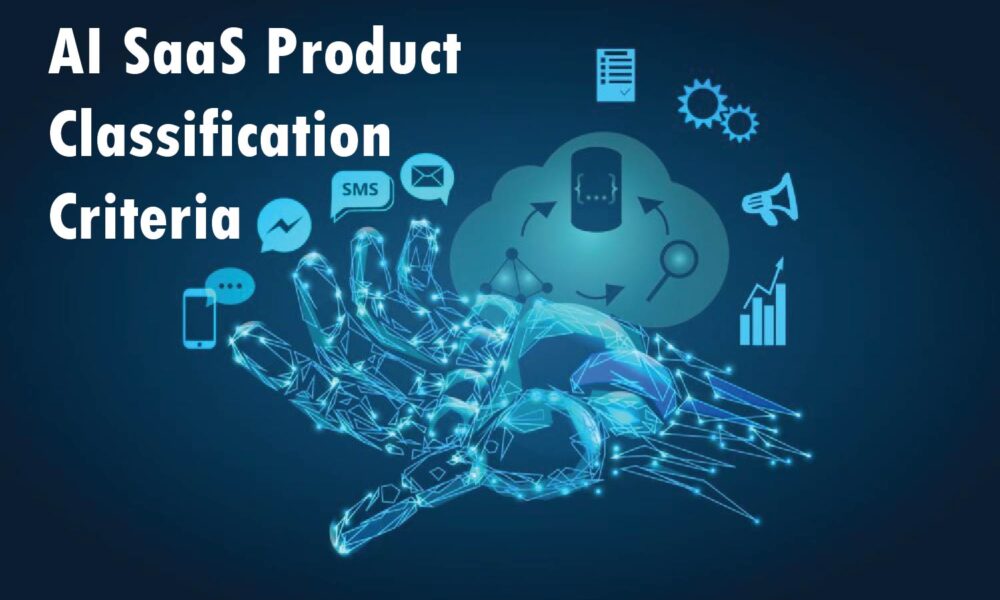How to Apply AI SaaS Product Classification Criteria Like a Pro Today
The way modern SaaS platforms engage with their users has evolved dramatically. As digital solutions become essential to everyday business operations, customer interactions have increasingly moved online—raising expectations for instant, precise, and scalable support. This shift has placed immense pressure on support teams to deliver consistent service while managing a growing volume of inquiries. At the core of this transformation is a powerful enabler: automated intelligence, reshaping how support is delivered from start to finish.
Understanding the AI SaaS product classification criteria is now critical for businesses looking to adopt the right solutions. Not all AI-driven SaaS tools are created equal, and recognizing the differences helps organizations align capabilities with specific needs. These classification criteria often include factors like the level of machine learning integration, the extent of automation, scalability features, use-case specialization (e.g., customer service, analytics, or sales), and the depth of personalization provided. By evaluating SaaS products through these lenses, decision-makers can confidently choose platforms that meet both current demands and long-term growth strategies.
In today’s competitive tech landscape, grasping AI SaaS product classification criteria isn’t just useful—it’s essential for businesses that want to innovate, adapt, and lead in customer engagement.
Understanding Automated Help in User Assistance
In simple terms, automated help refers to technology that mimics human support capabilities to address user concerns. Whether it’s answering basic queries, routing problems to the right teams, or guiding users through self-service, this technology bridges gaps quickly. By handling repetitive and predictable tasks, automated systems allow human agents to focus on more intricate concerns that demand personalized attention.
Common Forms of Automated Help
- Interactive bots for live chat interactions
- Reply templates for frequent email questions
- Language tools that interpret and respond to natural speech
- Digital assistants offering guided help options
These tools not only ease user frustration but also remove the delays typically associated with waiting for human intervention.
The Role of Smart Categorization in Support Requests
Not every issue a customer faces is unique. While the wording might differ, many problems boil down to the same core challenge. For instance, a “can’t access account” complaint might appear under various phrases, but they all mean the same thing.
This is where intelligent sorting steps in. It identifies similar requests, bundles them into understandable groups, and sends them down the appropriate path. This early sorting mechanism improves the chances of a quicker, more accurate solution.
Behind the Process of Smart Sorting
Once a message is received, it’s scanned and matched to known categories. The system assigns a priority level and routes it to the appropriate resource—either an automated tool or a human with the relevant expertise. The result? A significant cut in handling time and less room for error.
Empowering SaaS Teams With Intelligent Systems
Many SaaS companies rely on streamlined operations to maintain user satisfaction. Intelligent ticket sorting plays a vital role in this by removing obstacles in internal processes. Here’s how:
Building a Flow That Runs Itself
With intelligent systems in place, businesses can set up response chains that move without manual input. Examples include:
- Creating entries automatically from chats or emails
- Tagging requests based on topic or urgency
- Assigning tasks to appropriate staff
- Logging outcomes and archiving resolved concerns
This kind of automation ensures that no request gets lost or delayed due to oversight.
Deciding What Comes First
Not all support queries carry the same weight. A single customer locked out of their dashboard differs from a full-blown outage affecting hundreds. Smart systems know the difference and apply urgency rules accordingly.
They scan for specific terms or situations and push urgent matters to the front of the queue. This hierarchy ensures that pressing concerns are addressed promptly without burying smaller issues.
Accelerating Solutions for Critical Problems
A significant benefit of intelligent support tools is their speed. Once a request is tagged as important, the system fast-tracks it through channels. Using historical data and common solutions, it may even respond before a human agent becomes involved.
This process is especially helpful for platforms that require 24/7 availability or serve customers across different time zones.
Supporting Staff by Reducing Repetition
Behind every successful customer interaction is a team of professionals balancing volume with complexity. When these teams face hundreds of repetitive requests, fatigue sets in. Intelligent sorting lightens their load by filtering out the repetitive, leaving only tasks that require genuine analysis.
The result? Staff can focus on challenging concerns while maintaining a higher quality of response overall.
Smarter Workflows, Better User Experiences
When support systems run smoothly, the customer notices. Reduced wait times, accurate answers, and a sense of being understood all contribute to a stronger bond between company and user. Behind the scenes, much of this experience is powered by how well the system understands and sorts user intent.
Creating Clear Categories From Day One
To implement effective automation, it’s essential to first understand common user challenges. Companies should invest time in identifying the most frequent types of support issues they encounter. Terms like “billing error,” “feature not loading,” or “change password” can be grouped under broader labels, making the entire process easier to manage.
Setting Triggers for Escalation
Not every concern can or should be resolved by automation alone. Systems should be equipped with rules that identify when human attention is necessary. For example, repeated attempts to resolve the same problem might signal a deeper issue. When these flags are triggered, the case is rerouted for manual handling.
Making Automated Replies Feel More Personal
While users may understand that they’re communicating with a bot, tone still matters. Using tools that simulate polite, conversational language makes interactions feel less mechanical. Even an automated message can sound respectful and empathetic with the right phrasing.
Staying Adaptive With Time
Markets evolve. User behavior shifts. New challenges emerge. That’s why any intelligent system needs regular tuning. Companies should evaluate how well their ticket classification performs and adjust it to reflect changing customer language or concerns.
Lessons Learned From Adopting Smart Help Tools
Integrating intelligent systems into support operations comes with its own learning curve. For companies just starting this journey, a few lessons can make all the difference.
Know Your Patterns
Before relying on technology, spend time analyzing real user queries. What themes keep showing up? What terms are customers using? Mapping this out provides a foundation for effective automation.
Make Data Your Guide
The better the data feeding the system, the more accurate the outcomes. Pulling insights from past tickets, customer feedback, and chat logs helps refine how tickets are grouped and assigned.
Review and Refresh Regularly
Don’t assume the first setup is the final one. Conduct frequent reviews to identify areas where automation may fall short. Perhaps it mislabels a complex issue or delays a critical one. Continuous improvement ensures long-term success.
Involve Human Oversight
Automation should never completely replace human intuition. Instead, it should enhance it. By keeping experts in the loop, companies strike a healthy balance between speed and empathy.
Clearing Up Confusion
Are automated systems suitable for all types of user queries?
Not always. While they excel at handling repetitive and predictable issues, complex problems involving multiple departments or personalized solutions often require human input.
Can users tell if they’re talking to a machine?
Sometimes, yes. However, when done well, the transition from automation to human feels smooth and doesn’t disrupt the experience.
What if the system misclassifies a request?
That’s why regular updates and checks are essential. Good systems learn from past errors and improve over time, reducing the likelihood of misclassification.
Do these systems work for small SaaS companies too?
Absolutely. In fact, smaller teams often benefit more because it allows them to provide quality support without hiring large support departments.
How long does it take to implement a working system?
That depends on the complexity of the business and the volume of support requests. However, initial benefits often appear within weeks of setup.
Final Thoughts
Today’s customer expects more than just polite replies—they demand fast, accurate, and personalized solutions. In an era where user experience can make or break a brand, SaaS companies must go beyond traditional support methods. Integrating smart support systems powered by AI gives companies the competitive edge they need to thrive. These tools don’t just accelerate response times—they empower teams to handle complex queries efficiently, often with fewer resources and reduced operational overhead.
Understanding the AI SaaS product classification criteria becomes crucial when selecting the right support solution. Whether it’s the sophistication of natural language processing, the degree of workflow automation, or the ability to scale intelligently with demand, these criteria help determine how effective and future-ready a platform truly is. In the fast-paced world of digital services, choosing the right AI SaaS product isn’t just about features—it’s about aligning technology with customer expectations and business outcomes. As digital interactions continue to dominate, AI-driven support systems have shifted from being optional to essential for sustained success.






